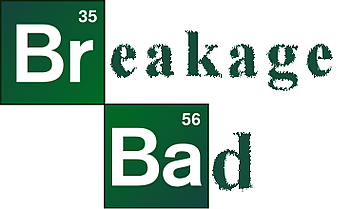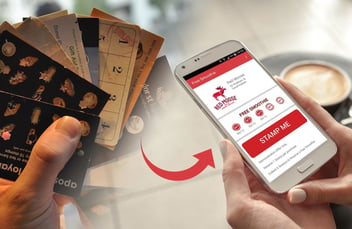The Top Benefits of Loyalty Programs (That Have Almost Nothing to do with Loyalty)
Loyalty programs don’t build loyalty.
Right? Isn’t that what we’re supposed to believe, according to many popular business pundits?
Let’s run with that. Let's assume there is some truth to the notion that loyalty programs don’t do much for loyalty.
But do they still have value?
Oh yeah.
Set the notion of loyalty aside for a moment, and consider these advantages that come with a loyalty program that you may not have considered:
-
Big, Useful Data
If there’s an opportunity to tie customer data together under one nice blanket, it’s a loyalty program. Loyalty programs make it easy to recognize who your best customers are, whether they’re on mobile, in-store, online, reaching out to customer service, or engaging on social. Loyalty programs are the easiest way to get customers to give you their info, enabling one-to-one insights into behavior.
Key stat: When retailers can collect insights from their loyalty-based data to refine pricing, promotions, assortment and marketing to customer preferences, there is a consistent 1% to 4% increase in sales and a 4% to 7% increase in profits (Boston Retail Partners)
-
Responsiveness
You ever feel like the only people who pay attention to your Facebook posts or Tweets are your parents, or your closest friends? Think of loyalty program members as the family and close friends of your brand. They’ll listen to what you have to say, even when no one else will. Members of loyalty programs are open to more frequent communications than other customers. In fact, they expect more communication (so long as it stays relevant).
Key stat: Email messages sent to loyalty program members result in 40% high open rates, 20% higher click through rates, and 10% higher sales revenue per message compared with emails sent to customers who aren't (Experian)

-
Multi-Channel Connectivity
We can’t say enough about how important it is to connect across a variety of channels, and not just rely on email. Loyalty programs allow brands to directly reward people for this behavior. Even better, people will willfully hand over their contact information when they sign up for your program. Score!
Key stat: 74% loyalty program members prefer to be communicated with via email; 46% want to receive communications from three or more channels (Maritz)
-
Influence
Okay, so maybe influence comes after loyalty, but people will do just about anything for a reward. We’re like Pavlov’s Dogs, willing to perform at a moment’s notice for behavior. Need to spread a message online? Tell your program members they can earn a freebie for a tweet or a share. It works better than you might imagine.
Key stat: 36% of Millennials said they shared digital content “to receive a coupon/discount/promotion.” (Annalect)
-
Customer Acquisition
Loyalty programs aren’t solely for existing customers. They’re the tipping point for many curious prospects. Let’s face it. If we knew we could get back a portion of every dollar we spend, we would. That’s not possible, but that inclination leads us to places that offer something, anything in return for our patronage. Even the most meager punch card program gives consumers a reason to choose one coffee shop over another.
From our collection of 2016 loyalty statistics:
81% of consumers are more likely to continue doing business with brands that offer loyalty programs (Bond)
More than 45% of consumers say the opportunity to earn rewards is a primary driver for purchasing from a brand (Maritz)
Millennials are 2.2 times more willing than boomers to pay a premium for products and services if they can also earn loyalty and reward points (Bond)
Loyalty programs don’t have to be total free-for-alls. Premium loyalty programs are a growing model, led by Amazon Prime and Restoration Hardware’s Grey Card. You don’t have to go with one or the other, either. Offer a free program to anyone, but keep the best member benefits neatly tucked away behind a premium wall.
Key stat: 62% of consumers said they’d consider joining a fee-based rewards program if their favorite retailer offered one (Loyalty One)
-
A Launching Pad for New Ideas
Members of loyalty programs tend to be more open to new ideas and concepts. Younger customers in particular are eager to get involved in product development. Think of your loyalty program member base as a soft launching pad; a group that’s excited to see what you have next and how they might benefit. And if they don’t dig what you’re testing, it isn’t going to harm your brand.
Key stat: 97% of consumers said they are somewhat likely to become more loyal to a company that implements their feedback (Apptentive)
What’s Loyalty Got to Do With It?
While these are definitely attractive benefits of a loyalty program, the end goal is always just that: loyalty.
The theme of this article is benefits of loyalty programs that don’t have anything to do with loyalty. But that’s a red herring. Cross-channel engagement, the wise use of data, taking action based on customer feedback. These are all important aspects of a healthy, engaging customer-centric operation.
The truth is, well-designed loyalty programs do engender loyalty. The problem is most loyalty programs aren’t designed well. They either offer little differentiation for the brand (most miles programs) or they only reward big spenders. They might focus too much on acquisition but do little to bring people back in.
Go ahead and add a loyalty program, and enjoy the benefits. Just remember there’s a bigger, far more profitable opportunity that comes with it.
Topics: customer loyalty
Written by: Brandon Carter





.jpeg)






Share your Comment.